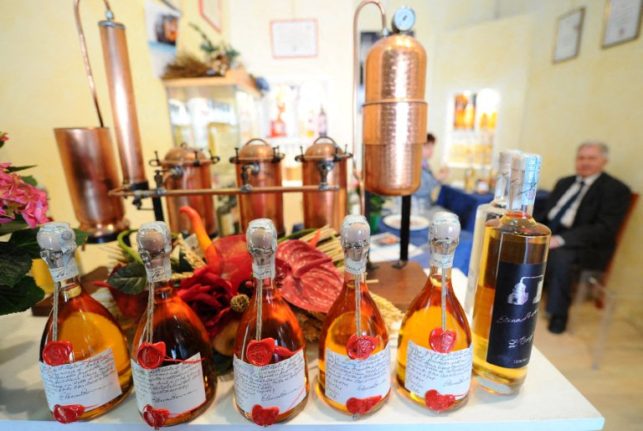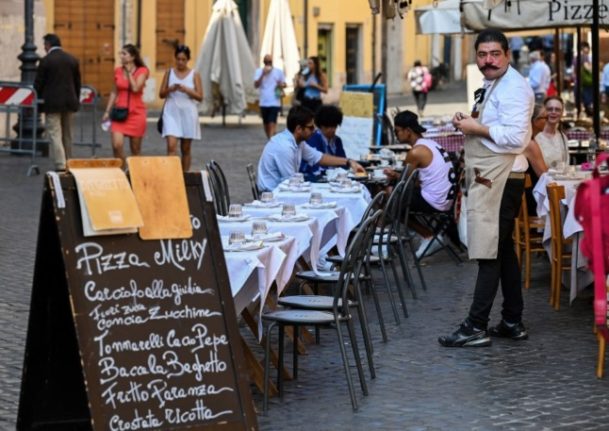Meals in Italy are no trifling matter, especially when it comes to Sunday get-togethers with family and friends or big celebrations such as birthdays, weddings and graduation parties.
But the unconscionably large quantities of food consumed on these occasions can often leave diners with an unpleasantly heavy stomach, which is why many Italians resort to drinking a digestivo – a highly alcoholic, intensely flavoured liqueur believed to provide digestive aid – at the end of the meal.
Though there is a huge variety of digestivi, with preferences largely varying from region to region, there are some national favourites which you can expect to find in most restaurants around the country.
Amaro
Amaro is an umbrella term for a large variety of herbal liqueurs with a distinctive bittersweet taste.
These liqueurs have an alcohol content percentage generally ranging from 15 to 35 percent, and high sugar content, which means they are usually more dense and viscous than ordinary spirits.
They can be served at room temperature, chilled or over ice.
READ ALSO: Aperol and aperitivo: A guide to visiting bars and cafes in Italy
Italian favourites include: Braulio, from Lombardy’s Valtellina valley; Averna, from Caltanissetta, Sicily; Montenegro, produced from a blend of 40 botanicals in Bologna; and Fernet Branca, which was originally sold as a cure for cholera but has since been downgraded to beverage purposes alone.
Limoncello
This sweet, lemon-based liqueur is one of Italy’s best-known digestivi and one of the most appreciated Italian spirits abroad.
It’s made by macerating lemon peels in sugar and alcohol and served chilled.
One of the most renowned limoncello brands in Italy is Sorrento-based Villa Massa, but plenty of other options are available.
Limoncello is also a very popular homemade liqueur. When life gives you lemons…
Can you make homemade Limoncello the Italian way? pic.twitter.com/1hjKoSeVNG
— Eva McMillan ♥️ (@EvasTeslaSPlaid) September 4, 2023
Sambuca
Sambuca is an anise-flavoured, colourless digestif.
The main ingredient is star anise but notes of elderflower, liquorice or citrus are often present.
Sambuca can be served on its own but can also be added to an espresso shot to make caffé corretto (literally, ‘corrected coffee’).
The best-known sambuca brand is Rome-based Molinari, which first became popular in the bars of the capital’s elegant Via Veneto during the 1950s and 60s.
Grappa
Grappa is again an umbrella term referring to a variety of highly alcoholic spirits (anything from 35 to 60 percent of alcohol content) obtained from grape pomace, i.e. the solid remains (skins, pulp, seeds and stems) of wine grapes after they’ve been pressed.
It’s usually colourless, but can also be pale to deep yellow based on differences in ageing.
Much like sambuca, it can be added to a shot of espresso to create a caffe’ corretto or can be served neat on its own.
One of Italy’s most famous grappa producers is Marolo, located in Alba, Piedmont.
The finish. Grappa tasting- difficult to choose. Both delicious. #ItalyforFoodies @Italia_USA_CAN, @ItaliaUSAandCAN #airtravel #italy #food #foodie @lakecomo.it #grappa pic.twitter.com/SXVym03ed5
— David J. Latt (@davidjlatt) June 24, 2018
Mirto
Mirto is a sweet liqueur made from macerated myrtle berries and leaves.
It’s most commonly produced in Sardinia, where myrtle plants grow spontaneously in the Mediterranean scrub.
You can choose between mirto rosso, made from berries of the black variety, and mirto bianco, made from berries of the white variety.
Like limoncello, it’s best served cold.
This is a non-exhaustive list of popular Italian digestivi. Have we missed your favourite digestif? Let us know in the comments below.



 Please whitelist us to continue reading.
Please whitelist us to continue reading.
Nocino! Walnut liqueur popular in Emilia Romagna.
Is any Italian liqueur also a digestivo?